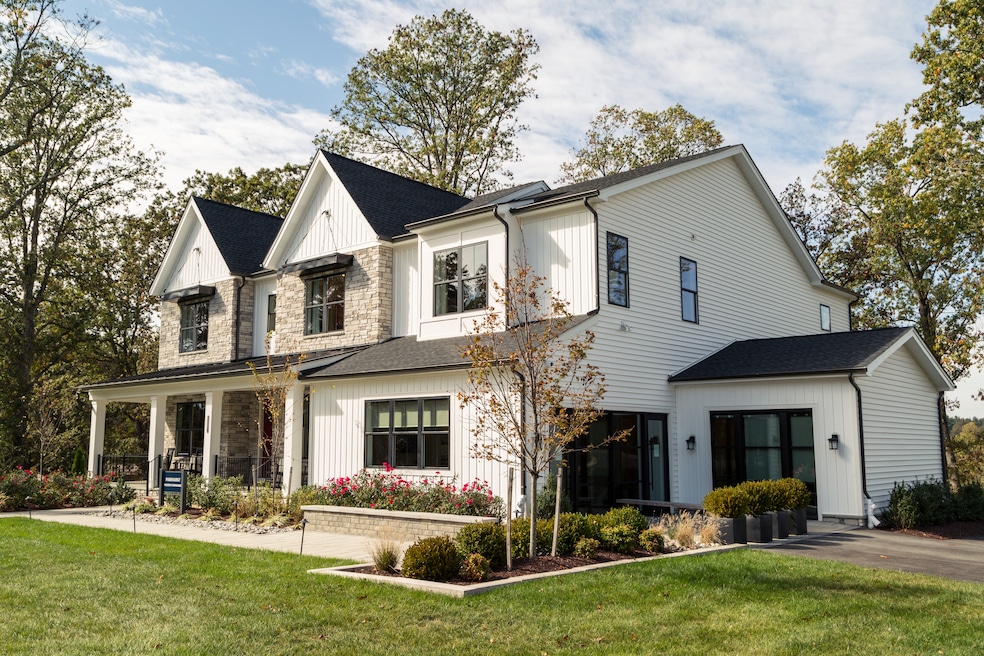Somewhere along the way, the "modern farmhouse" got a bad reputation.
Anchored in a lived-in and accessible appeal, the rustic style gained traction in the 2010s, partially thanks to HGTV personalities — and eventual media moguls — Joanna and Chip Gaines. Although inspired by farmhouses and barns in form and some materials, the homes often favored a bright white exterior sharply punctuated by black-framed windows. Homebuilders embraced the stark look for some new builds and flips, leaning into the easy replicability and blank slate it offered. Suddenly, the modern farmhouse and its exposed Edison bulb lighting were everywhere, and the style started waning in popularity.
“I do think that the modern farmhouse style has become a little bit of a cliche and gets people to sort of groan,” said Lorie Anderson Wier, founder of the Washington, D.C.-based Anderson Wier Studio. Part of that sigh, Wier speculated, comes from the “lack of nuance” that oozes from these white-and-black versions.
“It may or may not be appropriate at all for the neighborhood or scaled correctly or even have anything to do with the farmhouse vernacular,” Wier explained. To some extent, the term now means “something that it never really meant.”
But a successful modern farmhouse-style home still exists, she said. It just requires a little more thought.
These were 'humble materials that are honest'

A good starting point is to consider what attracts you to the look of a farmhouse, which is often “humble and approachable and connected to the land,” Wier said.
That consideration may begin with scale and materials that stay true to authentic farmhouses. These modestly sized homes often have front porches and gabled roofs. Older farmhouses in the United States can date to the 18th or 19th centuries and were constructed using easily accessible wood and stone.
These were “humble materials that are honest,” Wier explained, but today’s manufactured finishes meant to mimic the look of these elements can derail efforts to copy the style.
“If the whole notion of a farmhouse is getting rid of the pomp … then I think that the whole addition of things that are a little bit of like smoke and mirrors and not true take it in a different direction,” Wier explained.
Basic shiplap, or wooden panels, remains a popular choice for walls inside and outside, but small tweaks, like selecting an option with a V-groove detail, can add depth. Wier integrated that V-groove option into a farmhouse-inspired project in Sonoma, California, aiming to “really have the bones of the house feel textural.”

Another important element is the color palette. Farmhouses are often painted basic colors, but, rather than monochrome, consider pairing inky blues and deep greens with a lighter facade, creating contrast without the austerity of black and white.
Interior choices from fabrics to secondhand furniture collected over the years can also offer the lived-in aesthetic that can lend the farmhouse-style appeal rather than sourcing new, mass-produced items designed to appear used.
“I don’t think that people think of florals, calico fabrics, ticking or things like grain sacks,” Wier specified for fabric options. They’re elements of farmhouse Americana that offer opportunities for reuse and that give homeowners a canvas for their authentic taste.
“That is about feeling emboldened to mix patterns and to have a house that’s individual,” she said.
Make it modern
So where can the "modern" come in? Maybe in subtle lighting choices with streamlined forms, or even in something as unexpected as dark grout in a tiled bathroom. But giving a home time to evolve is essential.
“People want to steep themselves in a sense of history and a story but have to be comfortable with Page One of it, which is of it being something that’s alive,” Wier said. “It’s living and not manufactured.”
